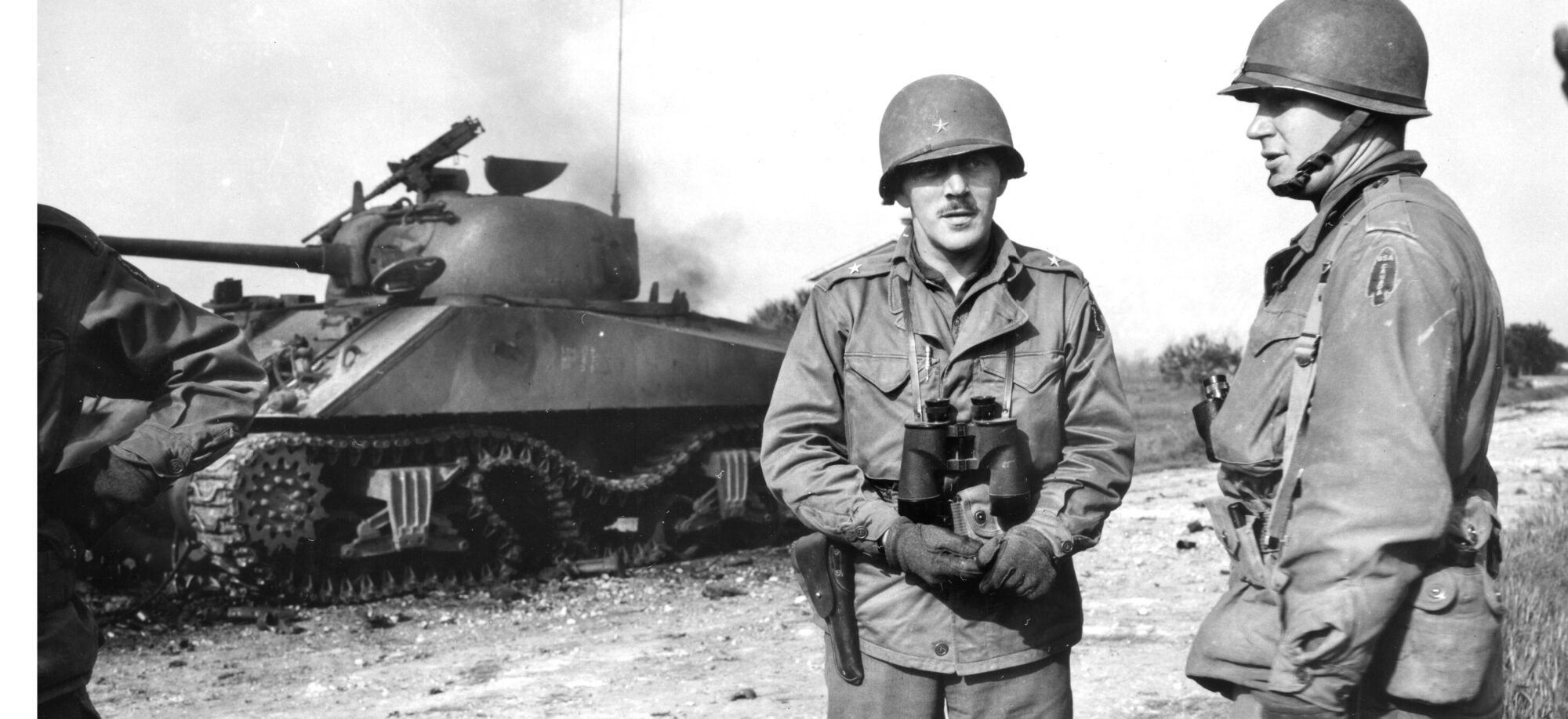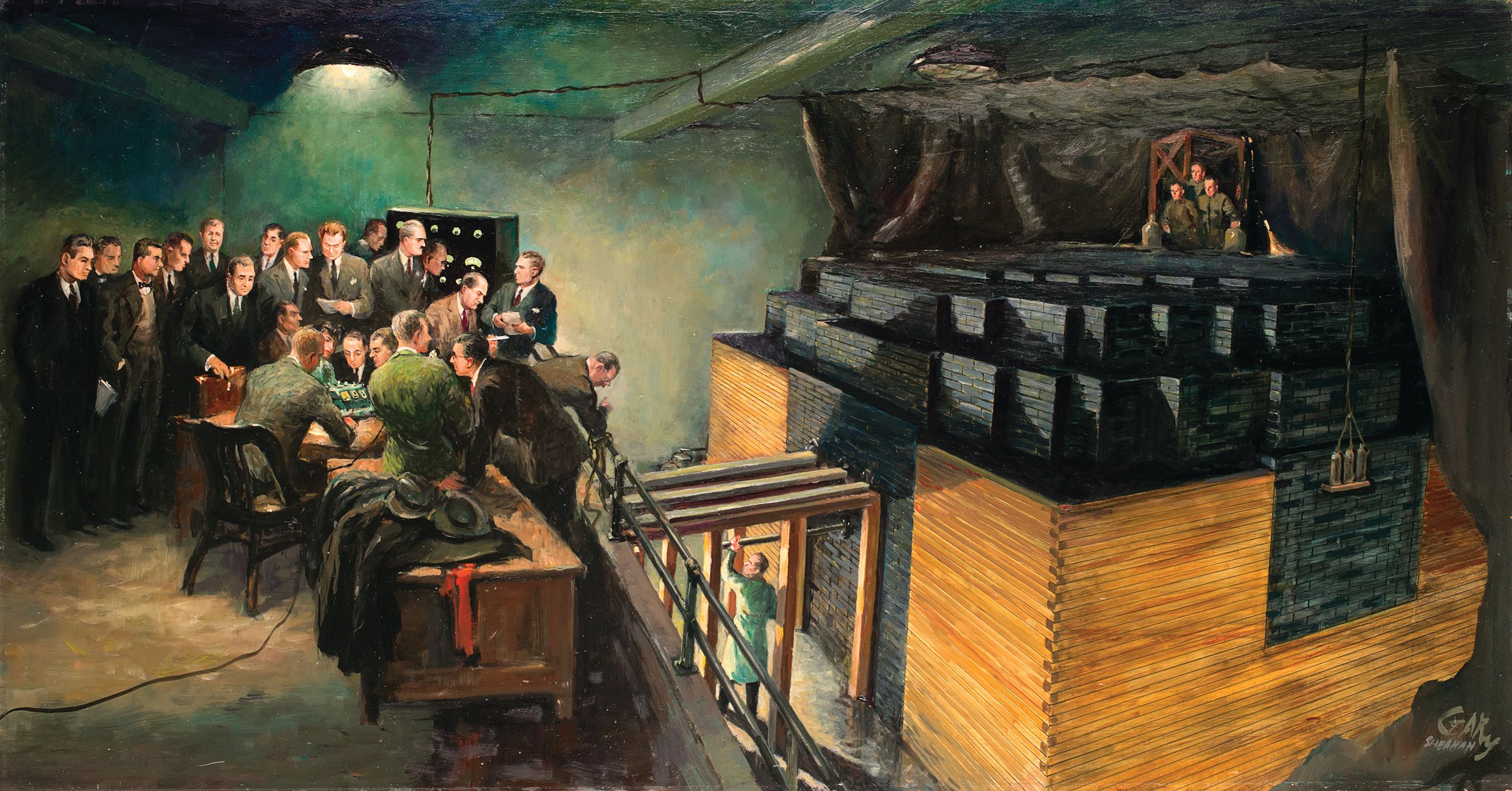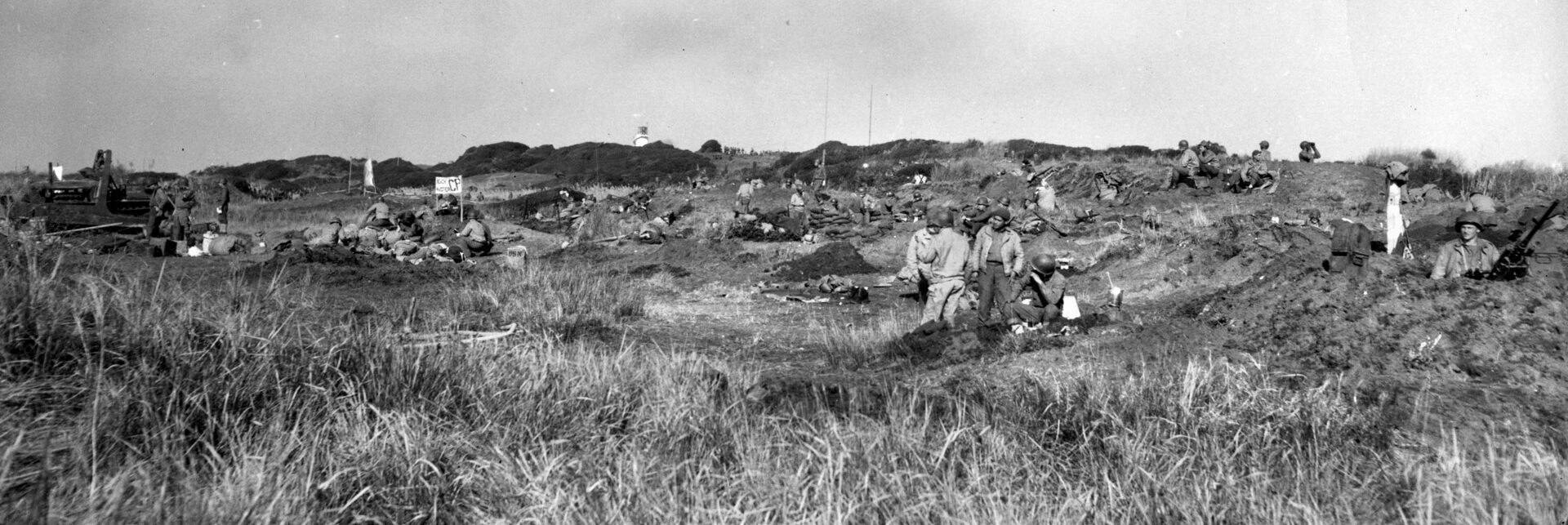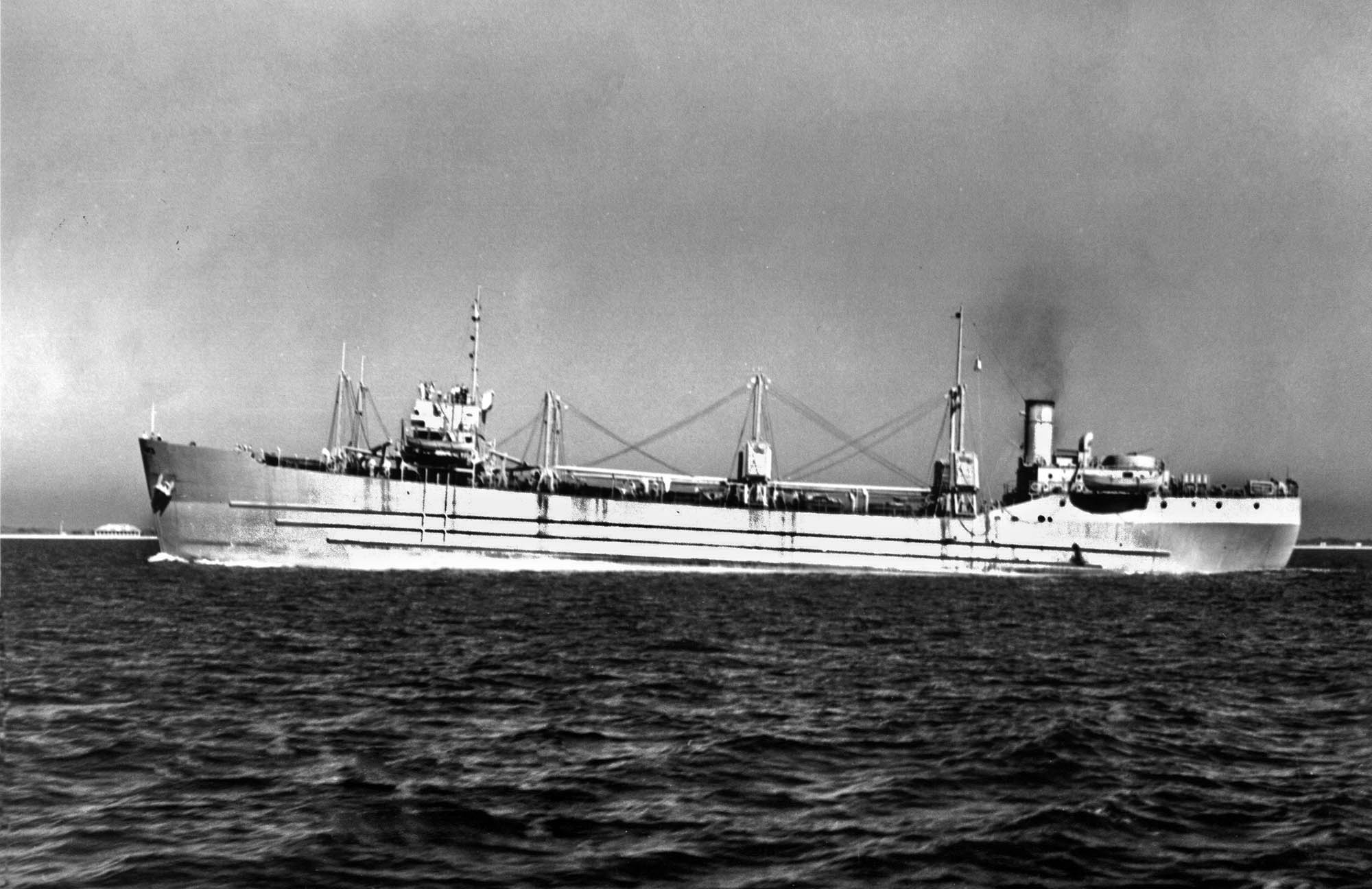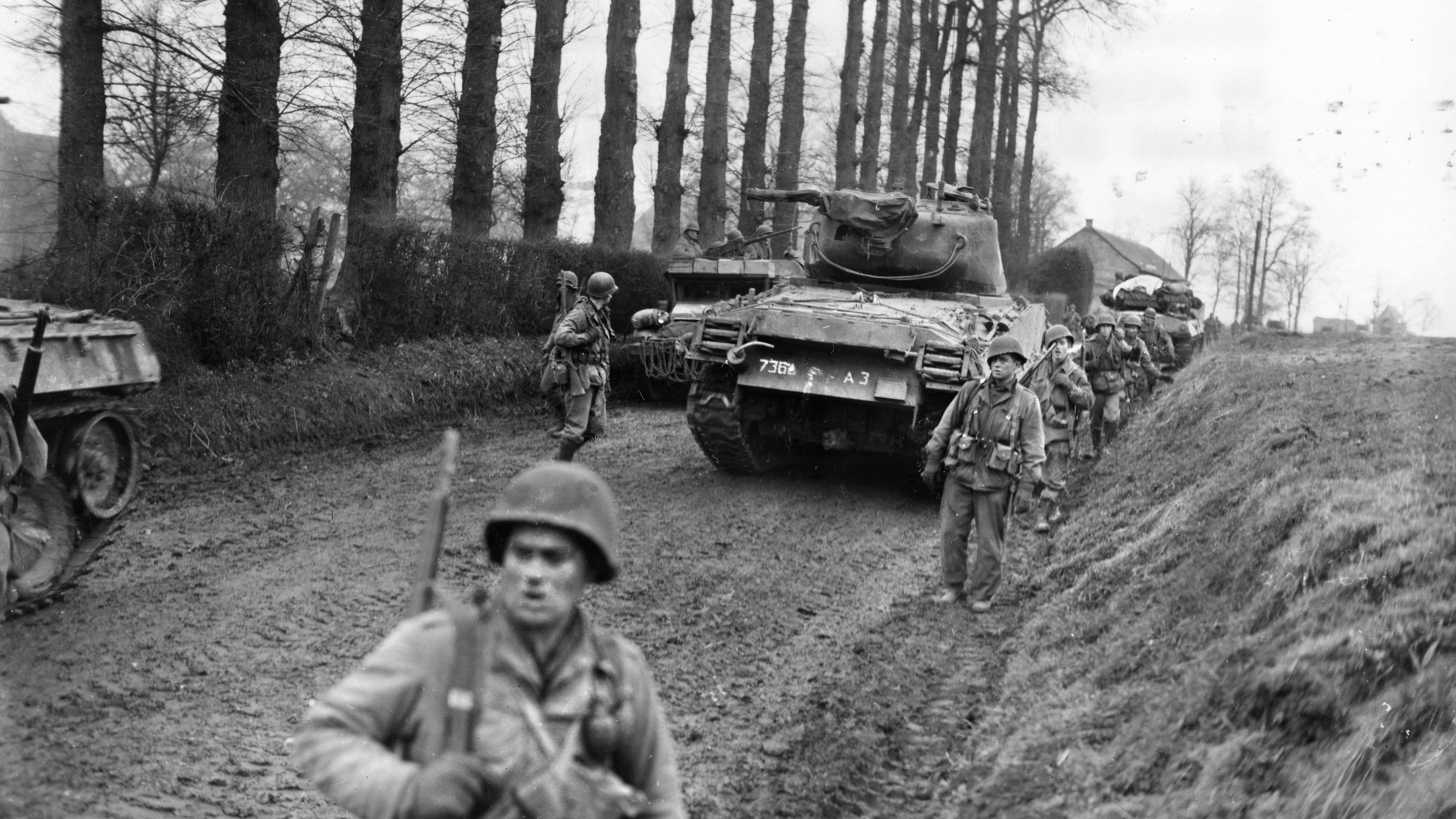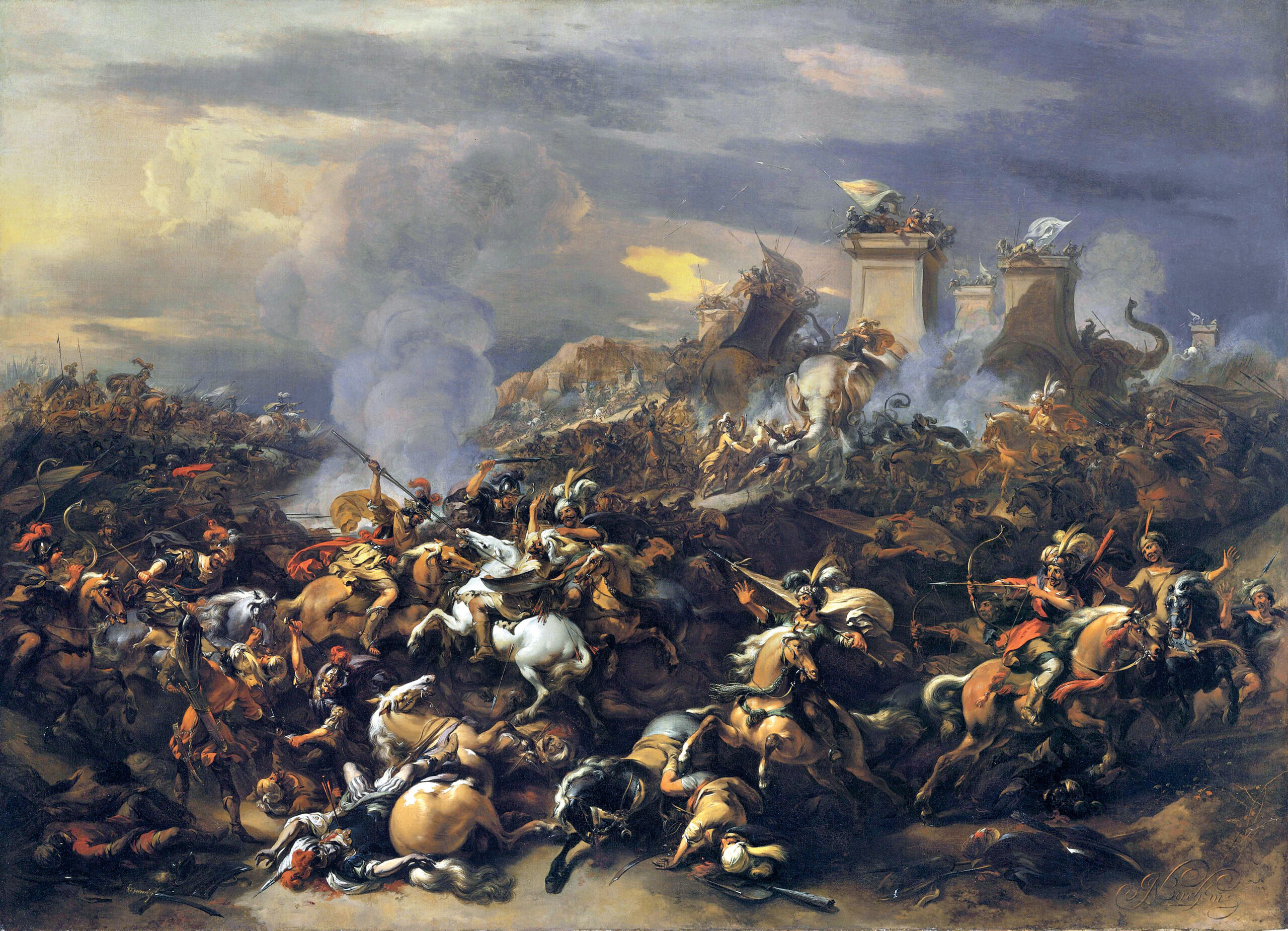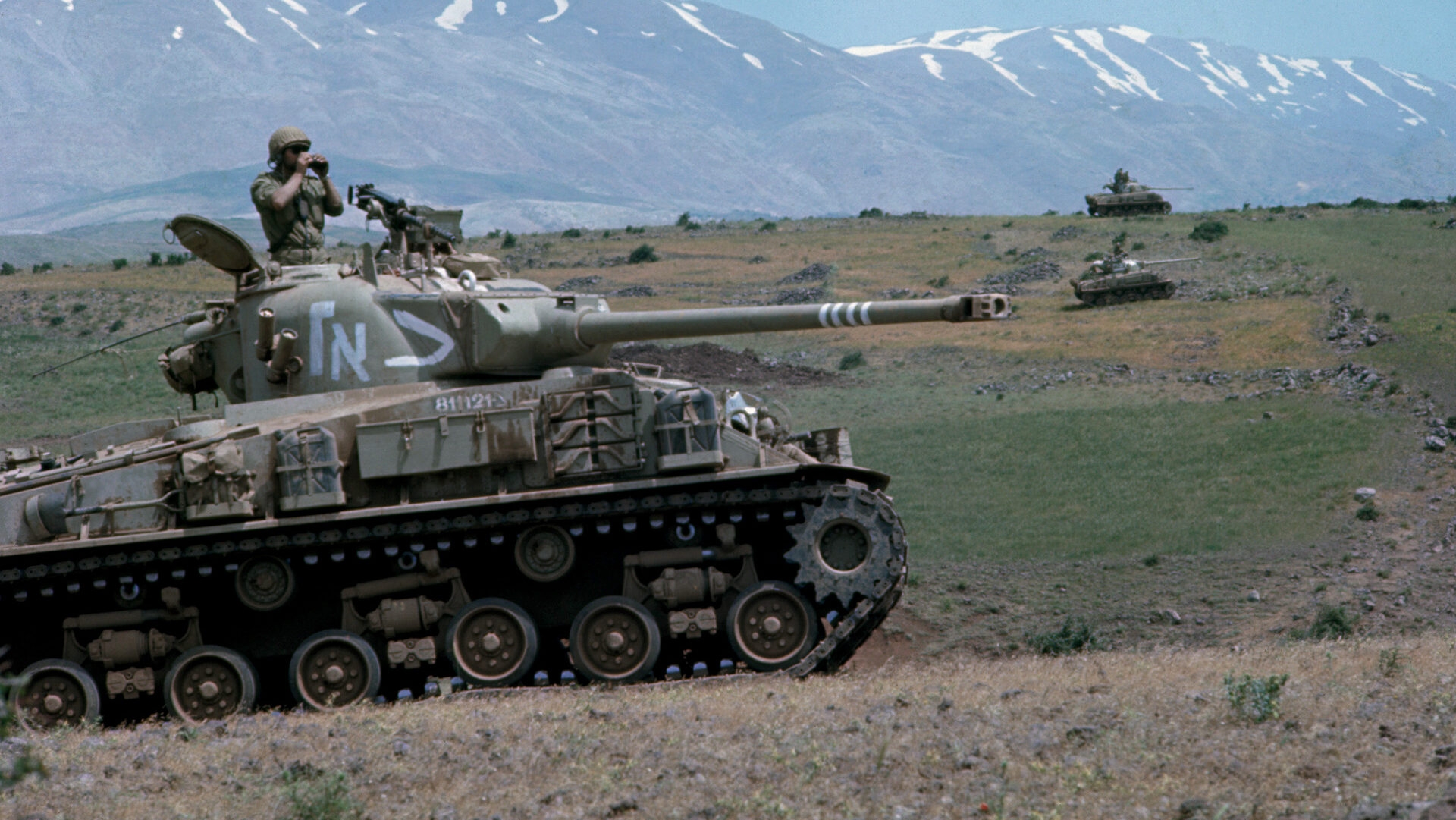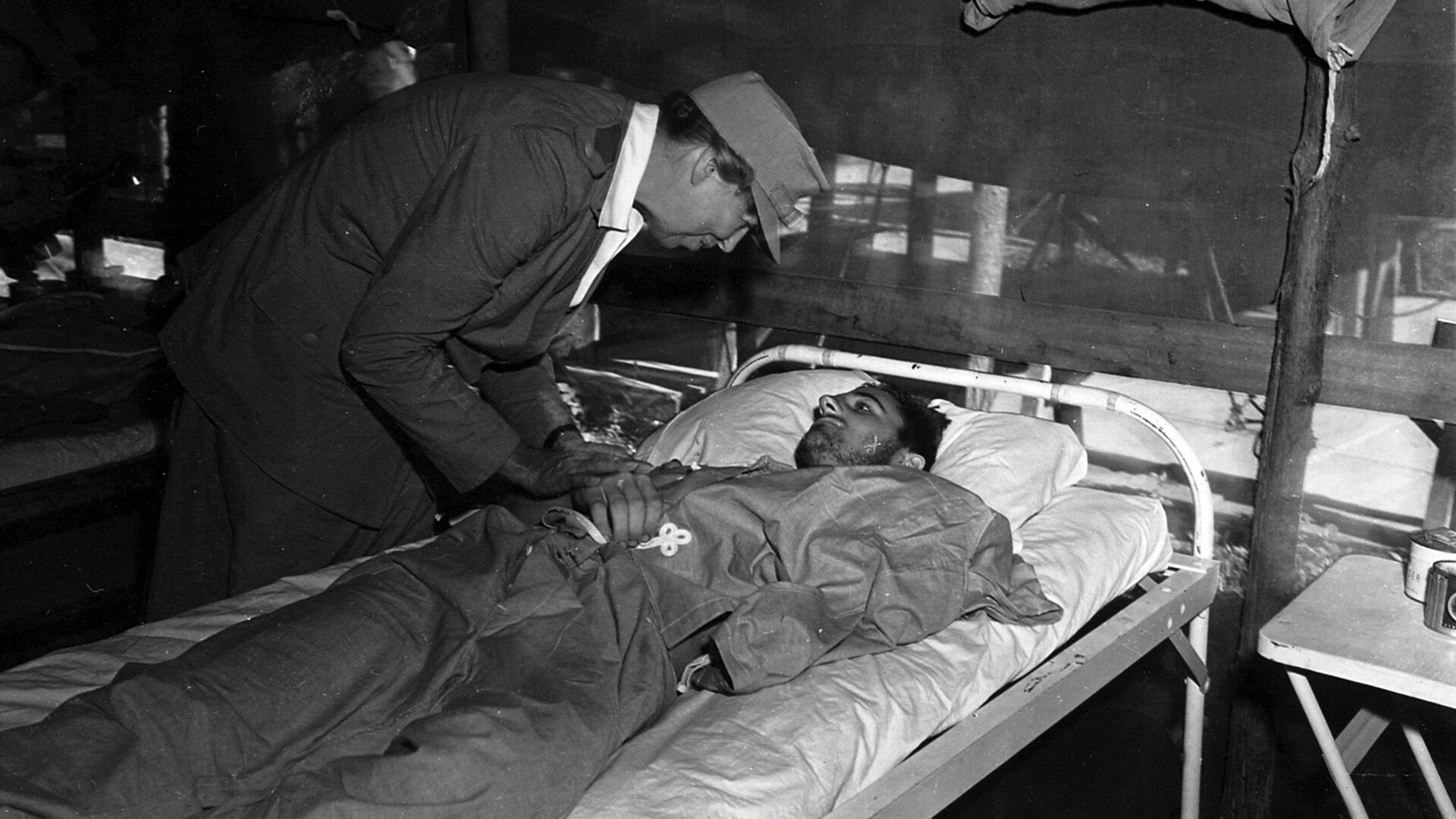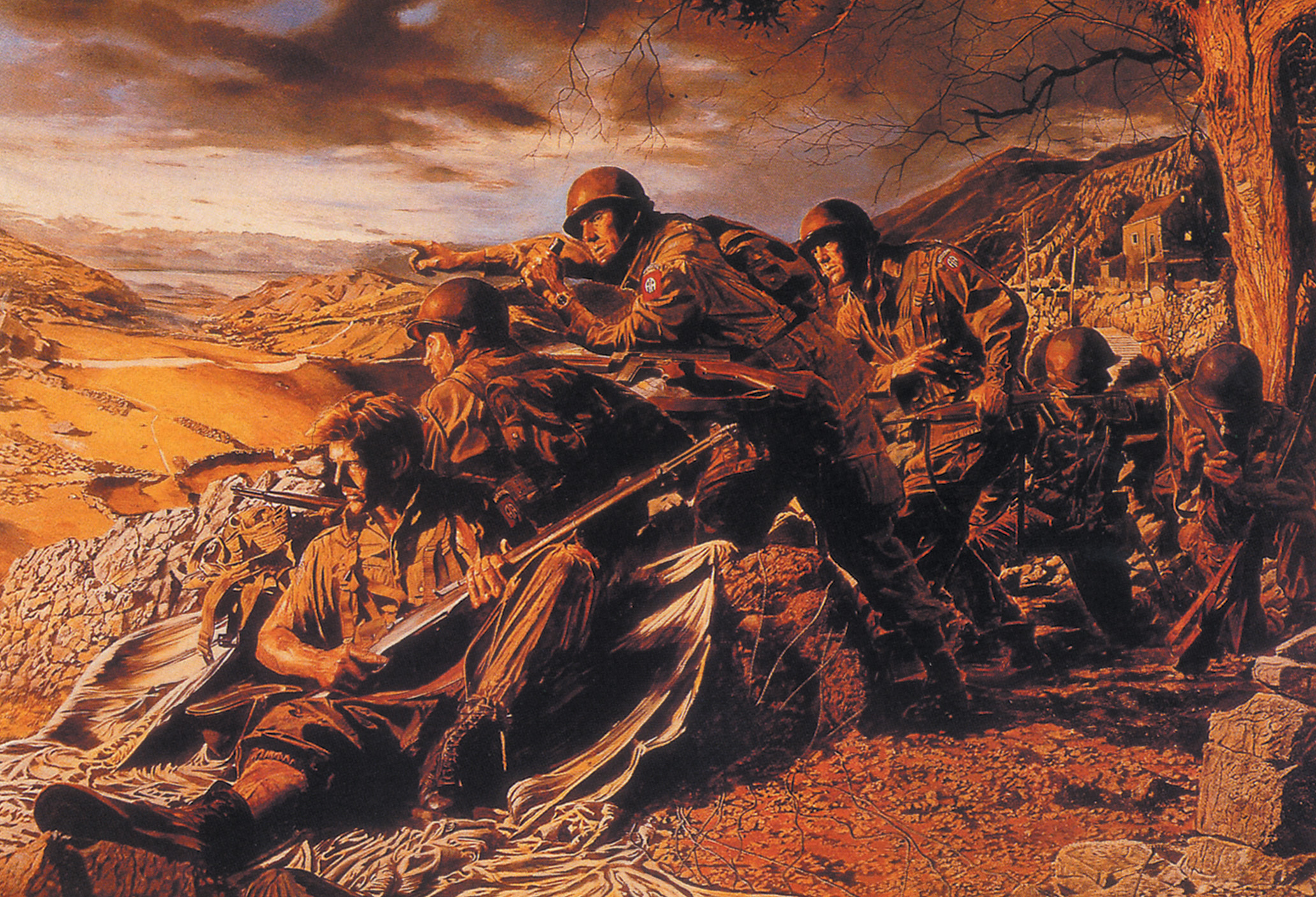By Michael D. Hull
When General George C. Marshall visited London in April 1942, the new chief of the British Combined Operations Command, Lord Louis Mountbatten, introduced him to a “very odd-looking individual … [who] talks well and may have an important contribution to make.” The man in question was Geoffrey N. Pyke, a bearded, unkempt maverick and former journalist, philosopher, and inventor who had joined Mountbatten’s coterie of civilian strategists. Just weeks before Marshall’s visit, Pyke had conceived a plan called Project Plough, which envisioned specially trained troops on motorized, armed sleds attacking vital hydroelectric plants in Nazi-occupied Norway, traversing mountain passes from Italy into Germany, and sabotaging enemy targets in Romania. Mountbatten viewed it as “probably the most bold and imaginative scheme of this war.” The antisocial genius’s project eventually fell by the wayside. Nonetheless, the truly unique commando assault force created to carry it out—the 1st Special Service Force (SSF)—later made quite a name for itself with its successful combat record and its colorful approach to fighting, earning it a raft of nicknames during its year and a half in service: “The Thugs,” “Freddy’s Freighters,” and “The North Americans.” The Germans invented a particularly endearing nickname after encountering the 1st SSF in battle: the “Devil’s Brigade.”
Lt. Col. Robert Tryon Frederick, Organizer of the Devil’s Brigade
Later that same year, the Allied high command decided to go ahead with Project Plough, which called for covertly training and inserting a 1,600-man sabotage force into Norway to wreak havoc on German occupation forces. British Prime Minister Winston Churchill insisted that Canadian troops be included to enhance the value of the unit and suggested that it be called the “North American Force.” The official unit name finally chosen was crafted to mask its identity by echoing the name of the U.S. Army’s entertainment branch (Special Services).
By early that summer, the new unit’s housing was undergoing hasty renovations at remote Fort William Henry Harrison outside Helena, Montana, and trains and trucks began to roll in bringing volunteers. The volunteers came from many walks of life, but most were hardy outdoorsmen who had been told only that they were joining an elite unit. Forming about a third of the force’s overall strength, the Canadians were drawn from proud regiments such as the Royal Winnipeg Rifles and the Queen’s Own Cameron Highlanders, while the Americans comprised a motley assortment of lumberjacks, miners, trappers, game wardens, and misfits from Army stockades. There were also teachers, farmers, Sunday school teachers, choristers, political bosses, and former bodyguards for Hollywood stars.
The commander of the force was 35-year-old, San Francisco-born Lt. Col. Robert Tryon Frederick, who had served in the Coast Artillery Corps after graduating from West Point in 1928. At the time that Dwight D. Eisenhower—then chief of the War Department’s planning division—and Lord Mountbatten selected him for the new assignment, he was desk-bound and working for the War Department general staff. Tall, slender, and mustached, Frederick was soft-spoken, dynamic, and incisively intelligent. He was to prove fearless in combat, and by the end of the war he would become the youngest major general in the Army Ground Forces. His Canadian regimental commander was 34-year-old Lt. Col. Jack F.R. Akehurst, an Anglican clergyman’s son and former miner from Southern Ontario.
Frederick and his 172 officers organized the men of the SSF into a brigade-size unit comprised of three regiments of two battalions each. Its insignia was a red spearhead bearing the words “USA Canada.” Once the ranks of the SSF had arrived at Fort Harrison, the men underwent several months of intensive training in hand-to-hand combat and killing silently without weapons, skiing, mountaineering, parachute jumping, and demolitions.
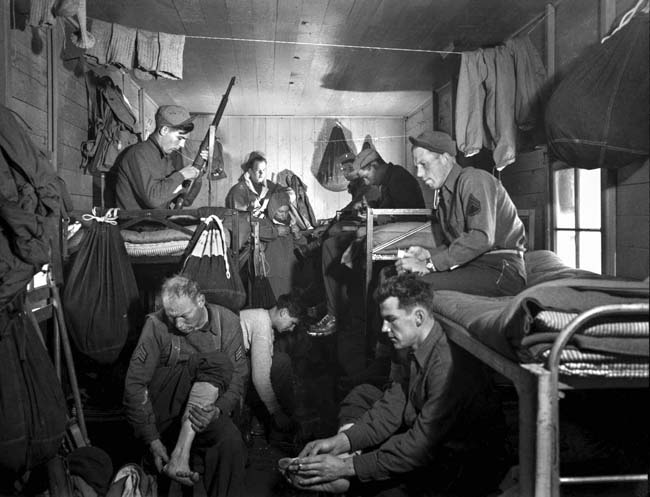
How the Devil’s Brigade Went from Barrack Brawls to a Cohesive Unit
Organization and training proved to be the easy part of forming the SSF into an effective fighting force, though. Building team spirit proved much more difficult, and there were initially many barracks and barroom brawls among the 2,194 men of the U.S.-Canadian force. Over time, though, they grew to respect each other and idolize their commander.
Project Plough, the operation in Norway for which Frederick’s Devil’s Brigade had trained, was called off in the autumn of 1942, and he was ordered by the general staff in November to prepare to take his men—fighting fit and eager for action—to New Guinea. The next day, this too was canceled. Frederick was now told that the brigade would take part in a planned invasion of the Aleutian Islands in the Northern Pacific the following spring.
On Army Day, April 6, 1943, after marching in dress parade through Helena attended by the governor of Montana, Frederick and his men headed for Camp Bradford at Norfolk, Virginia, for training in amphibious tactics. After intensive instruction in boat landings and night loadings, the force moved on May 23 to Fort Ethan Allen near Burlington, Vermont, its final staging ground in America.
After a few weeks, the men headed for San Francisco, where they were to board transport ships that would take them to their first action in the Aleutians. A 12,000-man U.S. amphibious force had invaded the island of Attu on May 11 and waged a bitter offensive, with the loss of 561 killed and 1,136 wounded. Of the 2,500 Japanese defenders, only 29 survived.
The Forcemen embarked from San Francisco on July 10 and arrived in the chilly, fog-shrouded Aleutians on July 25. On August 15, Frederick’s brigade was part of a 34,000-man U.S.-Canadian assault force—supported by three battleships—landing on Kiska. But the Japanese had evacuated the island, and the Forcemen were denied their baptism of fire. The task force commander, Maj. Gen. Charles H. Corlett, nevertheless cited Frederick for his “splendid leadership” and his men for their “fine spirit and unselfishness.”
Frederick’s Men Get their Chance to Enter the Fray
Finally, after tireless pleadings by the frustrated Colonel Frederick, the Forcemen won their chance to fight. Frederick’s superiors tapped the SSF to join the Italian campaign, where General Bernard L. Montgomery’s British Eighth Army and Lt. Gen. Mark W. Clark’s Anglo-American Fifth Army were slogging northward and struggling to dislodge Field Marshal Albert Kesselring’s well-entrenched German armies.
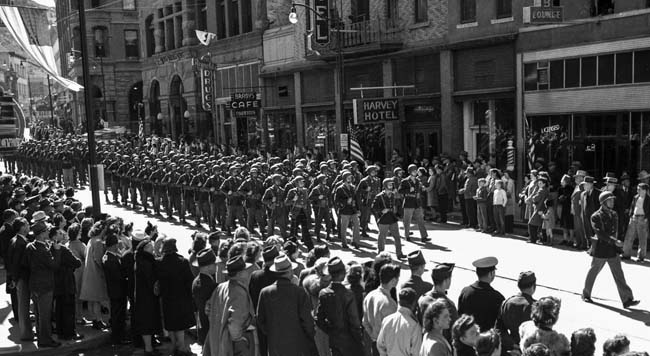
After returning to Fort Ethan Allen and then staging at Camp Patrick Henry in Virginia, the SSF boarded a British troopship, the Empress of Scotland,on October 27, 1943, at Hampton Roads, Virginia, and sailed to Casablanca. Frederick and his men landed at Naples on November 19 and went into the line at Santa Maria with Maj. Gen. Fred L. Walker’s 36th Infantry (“Texas”) Division. The North Americans faced a tough assignment in their first action: to capture several enemy mountaintop outposts that were part of Kesselring’s Bernhardt (Winter) Line in the rugged Mignano Gap, south of strategic Monte Cassino.
The key to breaching the line was represented by two formidable peaks named Monte la Difensa and Monte la Remetanea. The area was held by the crack 15th Panzergrenadier Division, with the Hermann Göring Division in reserve. Previous assaults by British, American, and Canadian troops had failed at great cost.
The first objective for the Devil’s Brigade was the 3,120-foot Monte la Difensa, christened the “Million-Dollar Hill” after it had been pounded with 206,929 shells from British and American artillery. At 1:30 am on December 3, the North Americans started climbing, burdened with 60-pound rucksacks, weapons, and extra ammunition. Little by little, they inched their way upward along steep mountain trails through the 1,000-foot tree line. Worse still were the bare, almost perpendicular crags and rock faces that had to be surmounted. It was a nightmarish, hour-by-hour ordeal in fog and swirling snow that left the soldiers sweating and shivering.
Somehow, though, after resting on narrow ledges, 600 of them neared the cloud-enveloped summit where hundreds of unsuspecting German troops were dug in underground and in foxholes in a saucer-shaped area the size of a football field. The North Americans were ordered to hold their fire until 6 am, but others—with their faces blackened and wielding trench knives and bayonets—slipped forward in the darkness and quietly slit the throats of enemy sentries.
As Frederick’s lead battalion neared the objective, a rock slide suddenly alerted the Germans. They fired green and red flares silhouetting the Forcemen, and a furious two-hour battle started. “All hell broke loose,” remembered Canadian Lieutenant Percy M. Crichlow. Tossing grenades and firing machine guns, the North Americans fought desperately to overcome the stubborn enemy force. In the forefront of the action was Colonel Frederick, armed with a pistol and grenade, wounded, and as “dirty, wet, and miserable as anyone.”
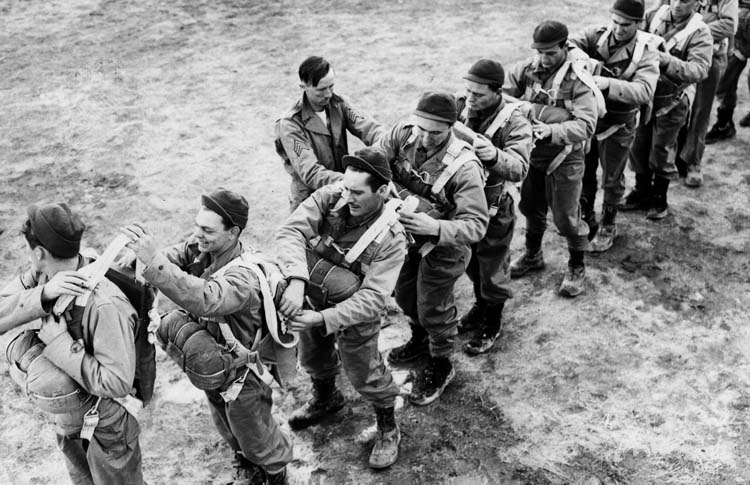
More Forcemen arrived, and casualties soared on both sides in the process of flushing out the Germans. One group of Germans rousted out of their emplacement surrendered, carrying a white flag, but when one of the prisoners shot the squad captain in the face and killed him, his enraged men mowed down the rest. From then on, the Forcemen took no prisoners unless ordered to do so.
Frederick’s gallant troops had secured the summit by the time the fog began to burn off at dawn, while to the south, the British 56th Infantry Division had captured Monte Camino. The SSF now took shelter in deserted pillboxes to wait for supplies to come up.
Meanwhile, the retreating Germans swarmed down the slope and across a connecting ridge to the second objective, Monte la Remetanea, while German artillery and mortars zeroed in and pounded the Forcemen on Monte la Difensa. But they held on, repelling probing counterattacks as rations, ammunition, and blankets were laboriously hauled up by the men and mules of their service battalion. Colonel Frederick was proud of his GIs and Canadians. In their first action, they had prevailed against a superior force and achieved one of the war’s epic feats of arms.
Heavy casualties forced Colonel Frederick to delay his assault on Monte la Remetanea for three days. Patrols were sent out to kill what German snipers they could find, and then, on the afternoon of December 6, Forcemen armed with knives, guns, and grenades moved silently through cold rain and shifting fog to kill more Germans. After a lengthy and brutal clash in which no quarter was given by either side, the enemy defenders began pulling back, and Monte la Remetanea was secured by noon on December 9.
Frederick lost 532 of his men killed or wounded, but the seizure of Monte la Difensa and Monte la Remetanea opened strategic Highway 6 for the Allies to advance forward. “This feat captured the imagination of the entire Fifth Army,” reported Clark Lee of the International News Service. “And overnight Frederick and his soldiers became almost legendary figures in a battle area where heroism was commonplace.” When Prime Minister Churchill received word from General Eisenhower of the La Difensa success, he declared, “If we had a dozen men like him [Frederick], we would have smashed Hitler in 1942. He’s the greatest fighting general of all time.” By its boldness and courage, the U.S.-Canadian Devil’s Brigade had quickly joined the ranks of the Allies’ fabled assault units, such as the British commandos, Special Air Service, Gurkhas, and Chindits, and the U.S. Rangers, Marine Raiders, and Merrill’s Marauders.
Frederick’s Men Turn Their Eye Toward Cassino
After a brief respite at their Santa Maria bivouac area, the Forcemen went on to seize German-held heights barring the Allied push toward Cassino. Defying bitter cold, snow, ice, and gale-force winds, they beat well-entrenched enemy units twice their size and took 4,000-foot Monte Sammucro (Hill 720) on December 25, 1943; Monte Vischiataro on January 8, 1944; and the Monte Majo Range to the north, the maneuver pivot needed for an attack on Cassino. Despite grave losses, the North Americans moved forward stealthily by darkness to surprise the enemy. On one hill, they captured 100 unsuspecting Germans dug in among mortars and machine guns. Colonel Frederick received three more wounds during the Monte Majo assault.
After their ordeal in the mountains around Cassino, only a few trucks were needed to carry the exhausted Forcemen back to Santa Maria on the afternoon of January 17. Of 1,800 combat personnel, 1,400 were either dead or lying in field hospitals. Fifty percent of the unit’s service battalion packers and litter men were laid low by wounds and fatigue.
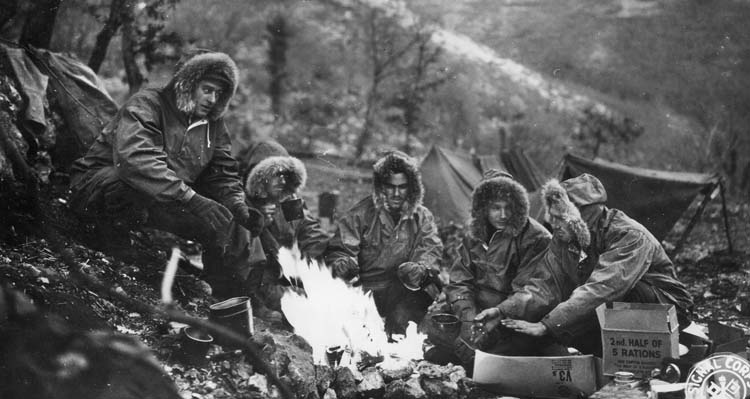
Operation Shingle: The Amphibious Invasion of Anzio
While the Allied attacks on Cassino were floundering, General Sir Harold Alexander, Eisenhower’s deputy Mediterranean field commander, ordered Maj. Gen. John P. Lucas’s U.S. VI Corps to undertake Operation Shingle, an amphibious invasion at the historic port of Anzio, 30 miles south of Rome and 70 miles behind the German Gustav Line. The ultimate objective was to push on and liberate the Italian capital.
The British 1st Infantry and U.S. 3rd Infantry Divisions landed west and east of Anzio, respectively, on January 22, while five American battalions attacked the port itself. The theory was that Field Marshal Kesselring would panic and pull back his Fourteenth Army, led by General Eberhard von Mackensen, as far as Rome. The Allied invaders met little opposition, and the cautious Lucas, fearing a repetition of the almost disastrous Salerno landings the previous September 9, dug in around a 15-by-7-mile perimeter and massed his forces, instead of pressing inland.
His hesitation gave the able Kesselring time to deploy the Fourteenth Army and seal off the crowded Allied beachhead, kicking off a series of fierce battles. A major Allied attempt to break out on January 31 was blunted by six German divisions, dooming Operation Shingle to harden into a bitter, four-month stalemate. To Adolf Hitler, the Anzio beachhead was an “abscess” that had to be excised.
In anticipation of a German counterattack, the Anzio bridgehead was reinforced by elements of the U.S. 1st Armored Division and three other infantry divisions, two British and one American. They were soon joined by the North Americans led by newly promoted Brig. Gen. Frederick. By then, more than 35 percent understrength, they landed at Anzio on February 2 and dug in for eight miles along the Mussolini Canal on the right flank of the beachhead. The Forcemen were given twice as much front to hold as Maj. Gen. John W. “Iron Mike” O’Daniel’s veteran U.S. 3rd Infantry Division.
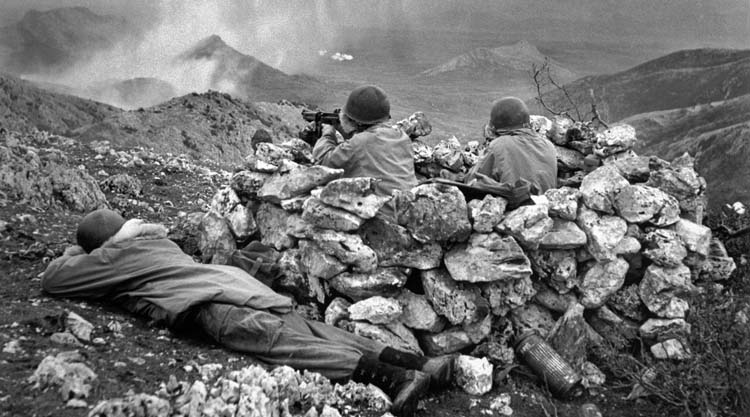
Trained as an assault force, Frederick’s men balked at assuming a defensive posture. “Defend, hell!” protested one soldier. “Let the goddamned Krauts do the defending!” So the Forcemen went on the offensive in their own inimitable fashion by raiding and killing as many of the enemy as they could. They snuck across the canal to German positions and looted horses, cattle, pigs, chickens, and anything else they could find. One patrol returned with a wheelbarrow full of sweet potatoes, four bushels of peanuts, 22 eggs, a rabbit, and a wounded enemy soldier.
The North Americans’ favorite activity, though, was the death raids. Heading out almost every night with charcoal-blackened faces, knit caps instead of helmets, and loose gear taped to prevent rattling, the raiders would silently slash the throats of sleeping Germans and sentries, then steal back to their own lines with prisoners just before dawn.
One Forceman returned from a patrol with a diary taken from a German lieutenant who had been strangled with piano wire. A recent entry lamented, “The ‘Black Devils’ are all around us at night. They are upon us before we even hear them coming.” Word spread swiftly through the enemy ranks that their attackers were former convicts—mostly murderers—who showed no mercy and took no prisoners.
General Frederick added a gimmick to fuel the enemy’s fears. He ordered “courtesy calling cards” printed that displayed the North Americans’ insignia and the words, “Das dicke Ende kommt noch!” (The worst is yet to come!). Forcemen pasted the stickers on the faces or helmets of Germans they had dispatched, and Devil’s Brigade intelligence reported that the psychological impact of these tactics was devastating.
Force intelligence officers later found a Wehrmacht headquarters message on one of the prisoners they interrogated that read, “You are fighting an elite Canadian-American force. They are treacherous, unmerciful, and clever. You cannot afford to relax. The first soldier or group of soldiers capturing one of these black-hearted men will be given a 10-day furlough.”
Legends in Their Own Time
A number of the Forcemen became colorful legends during the four months that German artillery, bombs, and two 280mm railroad guns pinned down the dispirited Anglo-American troops in Anzio. One was tall, red-mustached Lieutenant George Krasevac, who ventured out on solo patrols, captured a herd of cattle, and was wounded three times. On other occasions, he carried an umbrella and rode a bicycle along one of the streets to draw enemy fire. Another was Lieutenant Taylor Radcliffe, who was captured, beaten when he refused to reveal Allied dispositions, and escaped several times in one night.
And there was the indefatigable Frederick himself, described as “a crazy bastard” by some Allied generals. Wearing a knit cap and with his face blackened, he went on many patrols into German territory. One night, he and his men wandered into a minefield and were raked by automatic-weapons fire. Several Forcemen were cut down, including a stretcher bearer. Left with a badly wounded man, the surviving bearer shouted to a dark figure, “Don’t just stand there, you stupid bastard! Grab hold of the other end of the litter!” After the two Forcemen carried the wounded soldier out of the minefield under fire, the medic recognized the man at whom he had shouted. It was General Frederick.
Wounded nine times, the SSF commander was the most shot at general in American history. No other World War II general spent more time with his men in action than Frederick. He eventually received no less than eight Purple Hearts, and his many other decorations included two Distinguished Service Crosses, two Distinguished Service Medals, the Silver Star, the British Distinguished Service Order, and two Legions of Merit.
Despite mounting casualties in the face of nonstop German attacks, during which Frederick’s men were in action for 99 consecutive days, the Anzio defenders held on. The hapless Lucas was replaced by dashing Maj. Gen. Lucian K. Truscott, Jr., commander of the U.S. VI Corps. Eventually, on May 17, 1944, the day on which Cassino was at last secured, the Allied troops broke out of Anzio before linking up with the Fifth Army’s U.S. II Corps led by Maj. Gen. Geoffrey Keyes. The Anzio struggle had cost 9,200 British and 29,000 American casualties.
As Allied units pushed on toward Rome, meanwhile, General Clark lauded the performance of Frederick’s “aggressive, fearless, and well-trained” North Americans in the Anzio cauldron. He cited their “devastating and terrifying raids” which “gave birth to the legend of the invincible ‘Black Devils,’” and decided to reward them by allowing them to spearhead the entry into Rome. Defying General Alexander’s instructions for the Fifth Army to make its main effort eastward through Valmontone behind German forces on the Gustav Line, which would have speeded Allied operations, the glory-hungry Clark was eager to steal the limelight from General Sir Oliver Leese’s British Eighth Army and liberate the first Axis capital with the 45th and 36th Infantry Divisions.
The Forcemen Doggedly Pursue German Forces in Italy
After a 12-day break for regrouping and rest, General Frederick’s Devil’s Brigade went back into action, trekking across the mule trails of Rocca Massina toward the Alban Hills and the gates of Rome. In Valmontone and the little town of Artena, a stop on Highway 6 heading into Rome, the Forcemen battled through fierce resistance from German armor, self-propelled 88mm guns, flak wagons, and sharp-shooting snipers. Losses were heavy, but the North Americans pushed on doggedly.
At 1:06 am on Sunday, June 4, 1944, Frederick received a radio message from General Keyes tersely ordering him to enter Rome and capture six bridges over the River Tiber. The first elements of the brigade entered the city at 6:30 am. Hitler had given Kesselring permission the previous day to abandon the city, but the Forcemen nevertheless came under fierce fire from enemy tanks, flak wagons, and snipers. Handsome Lt. Col. Alfred C. Marshall, commander of the 1st Regiment, was killed, and Frederick was wounded three more times in the arm and leg, but the resolute North Americans pressed forward.
Riding a half-track out front, Frederick led his men—some on foot and others mounted on tanks of Maj. Gen. Ernest N. Harmon’s 1st Armored Division—through the city as snipers continued shooting and jubilant, cheering Romans dashed into the streets with fresh bread, wine, and flowers. With bazookas, grenades, and machine-gun fire, the Forcemen skillfully outflanked and cleared out pockets of German resistance, rolled on toward the six assigned bridges, and seized them by 11 pm. The 85th Infantry Division, meanwhile, captured the other eight spans to the south, and Rome was firmly in the hands of the Fifth Army.
With cameras focused and accompanied by his able chief of staff, Maj. Gen. Alfred M. Gruenther, General Clark triumphantly rode a jeep through St. Peter’s Square on the morning of June 5. He was the first general since Belisarius in ad 536 to capture the city from the south, and it had taken the Fifth Army 275 days and 125,000 casualties since the Salerno landings to get there. “This is a great day for the Fifth Army,” he declared, without mentioning the sacrifices of his British, Canadian, Free French, and Polish allies. Clark’s elation was dampened within a few hours by headlines proclaiming the massive Allied invasion of Normandy on June 6. The Italian campaign had become a sideshow.
The Forcemen, whose reputation as rowdy garrison troops was as legendary as their fighting record, missed the frenzied celebrations that engulfed the city. Instead, they were ordered to withdraw to the suburbs, where they slept before moving to Lake Albano near the Pope’s summer residence. Frederick made sure that his men were catered to and told his officers to overlook any but the most flagrant breaches of discipline. Celebrating in their own way, the Forcemen gorged on beer and big Italian meals, caroused with prostitutes and willing girls, and pilfered papal furniture, bed sheets, and statues. After a series of spot inspections and threats, the missing items were returned to the Vatican authorities.
Frederick Leaves his Devil’s Brigade for Another Command
Recovering from his wounds and with a leg in a cast, Frederick summoned his men to an awards ceremony on June 23, 1944. It became one of the most traumatic moments in the brigade’s brief history when the general announced that he was leaving for another command. The tough Forcemen “cried like babies when we said goodbye to General Frederick,” reported Sergeant Raphael P. Montone. Frederick had been directed to raise and lead the 1st Provisional Airborne Division for the imminent Operation Anvil-Dragoon, the Allied invasion of southern France.
The 10,000-man force was composed of British and American paratroop and glider regiments, and Frederick shaped and led it as brilliantly as he had the Devil’s Brigade. General Truscott noted later, “Frederick’s feat in organizing and training this composite force, and perfecting the operation within a period of less than one month, is one of the most remarkable exploits of the war. It was one of the most successful airborne drops.” Frederick, who went on to command the 45th, 4th, and 6th Infantry Divisions, was succeeded as commander of the North Americans by Colonel Edwin A. Walker, a mild-mannered, respected combat leader.
Moving on to Operation Dragoon
Just before the 1st Special Service Force left Lake Albano for Naples on July 1, General Clark again complimented the “elite” group. He told them that their exploits had forged “a bright new link in our military tradition.” The unit bivouacked in a fishing village south of Salerno and trained for their next action—an assault role in Operation Dragoon.
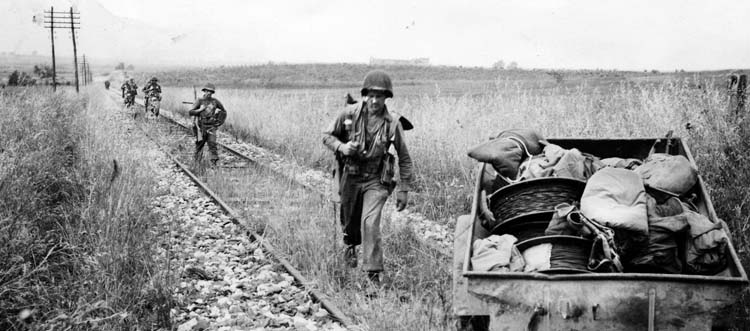
Set for 8 am on Tuesday, August 15, 1944, the massive invasion on a 37-mile stretch of the French Mediterranean coast between Toulon and Cannes was to be mounted by General Alexander M. Patch’s U.S. Seventh Army, Truscott’s VI Corps, General Jean-Marie Lattre de Tassigny’s Free French II Corps, and General Frederick’s airborne division. Colonel Walker’s 2,000 Forcemen were to strike the first blow against the Nazis’ South Wall.
The North Americans left from Corsica in a destroyer fleet and headed westward as the Allied armada stood a dozen miles off the Riviera coast. Ready to spearhead the landings by the night of August 14, they crammed themselves aboard transport ships alongside 700 French Commandos led by Lt. Col. Georges-Regis Bouvet. The Forcemen’s objectives were the small enemy-held islands of Ile du Levant and Port-Cros in the Ile d’Hyeres group, five miles off Toulon on the western flank of the invasion. They were to seize the islands by dawn on the 15th and silence a German 6.5-inch gun battery on the Ile du Levant that posed a threat to the invasion fleet. The French Commandos were to storm the mainland at nearby Cap Negre.
At 1:30 am on August 15, the Forcemen started scrambling down rope ladders from the transports. There were about 1,300 men of Lt. Col. Robert S. Moore’s 2nd Regiment and Lt. Col. R.W. Beckett’s 3rd Regiment. Their faces blackened with burned cork, the soldiers were armed with rifles, Tommy guns, bazookas, grenades, and daggers. They paddled inflatable rafts to the rocky, pine-clad islands and silently slipped ashore.
On the Ile du Levant, Moore’s men scrambled up the outcroppings and made their way through thick brush toward the enemy battery. All was ominously quiet as scouts went forward. An attack was hastily organized, and the Black Devils charged the guns. But no Germans were there, and the three big guns turned out to be camouflaged drain pipes.
Seconds later, incoming fire struck the area, and the Forcemen hugged the ground. Holed up in a cave at the other end of the island were 200 Germans with mortars, machine guns, and plenty of ammunition. As the Black Devils deployed to assault the stronghold, shells from the Royal Navy destroyer HMS Lookout whistled in to blast the enemy out of the cave. But the shells were not getting inside, so the Forcemen dashed through mortar volleys and approached the cave from three sides to pepper the opening with bullets and bazooka rounds. Suddenly, a German waving a white flag emerged from the smoke-filled opening, and cries of “Cease firing!” rang out. The battle for Ile du Levant was won.
On the nearby island of Port-Cros, meanwhile, 700 men of Colonel Akehurst’s 1st Regiment had slipped ashore and fanned out through the brush. There were no signs of an enemy presence as the Black Devils pushed on toward their objective, three formidable Napoleonic forts with 12-foot-thick stone walls and 20-foot earth and greenery ceilings. Entrenched inside were 58 Germans with machine guns and rifles.
As they crossed open ground to storm the forts, Akehurst’s gallant men came under withering fire. They had no armament heavier than bazookas, so Colonel Walker put in an urgent call to General Patch for a naval bombardment. Minutes later, gunfire from the heavy cruiser USS Augustabracketed the forts, but the Forcemen looked on in dismay as the eight-inch shells bounced harmlessly off the thick walls. The struggle for Port-Cros continued while Patch’s main American and French forces splashed ashore, Frederick’s paratroops dropped inland, and Prime Minister Churchill watched the invasion intently from the bridge of the destroyer HMS Kimberley.
The action on Port-Cros raged for two days and two nights as the tenacious Germans beat off repeated efforts by the Black Devils to root them out. Deadly Royal Air Force Hawker Typhoon fighters bombed and rocketed the citadels, but to no avail. Akehurst’s men eventually fought their way into one of the structures, but the other two held out.
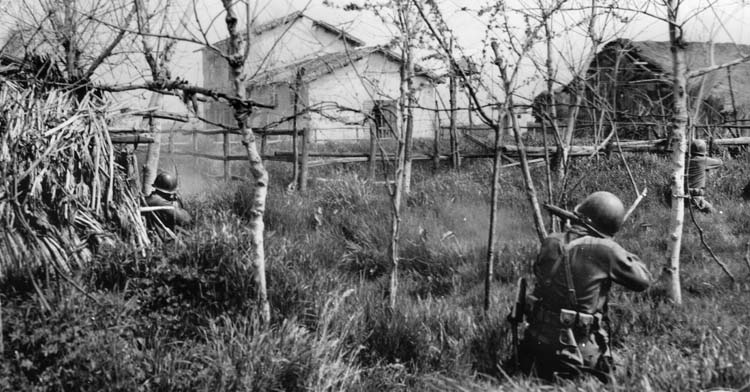
After Akehurst appealed for another naval bombardment, the 150-ton British battleship HMS Ramillies moved to a six-mile range and opened up with her eight 15-inch guns. Her first earthshaking salvo fell long, and the second short, but the third scored a direct hit on the forts. German white flags waved through the smoke, a drawbridge was lowered, and one of Akehurst’s companies dashed into the citadels and disarmed the dazed defenders. The battle for Port-Cros was over. A few days later, Colonel Walker’s Forcemen advanced rapidly eastward along the Riviera shore and took up positions behind the Franco-Italian border. They remained there until November 30.
Giving Rise to U.S. Special Forces
On December 5, the North Americans paraded on the Loup River flats at Villeneuve-Loubet, near Nice, and tears rolled down many cheeks as the adjutant read their inactivation order. After chaplains had read prayers for the men who had fallen from Italy to the Riviera, the Canadians formed into a battalion, marched past their American comrades, and went on to serve under their own colors. Some of the GIs were later assigned to airborne units, while Walker, now a brigadier general, plus a nucleus of former SSF men joined the newly formed 474th Infantry Regiment (Separate) of the U.S. Third Army. Led by Walker, the regiment served briefly in Germany and then, ironically, was sent to Norway in August 1945 to help disarm and repatriate German Army units.
The Devil’s Brigade, which inflicted an estimated 12,000 casualties on enemy forces and took 7,000 prisoners during the war, gave rise to the U.S. Special Forces.
The legendary unit’s exploits were later dramatized in a 1968 film, The Devil’s Brigade. Directed by Andrew V. McLaglen, it starred William Holden as Colonel Frederick and Cliff Robertson as his Canadian deputy, supported by Vince Edwards, Claude Akins, Dana Andrews, Richard Jaeckel, and Michael Rennie as General Clark. It was shot partly in the Wasatch Mountain Range in Idaho and Utah, with 300 men of the Utah National Guard as extras. The Hollywood Reporter and The Citizen-News praised the picture, but other reviews were mixed.
